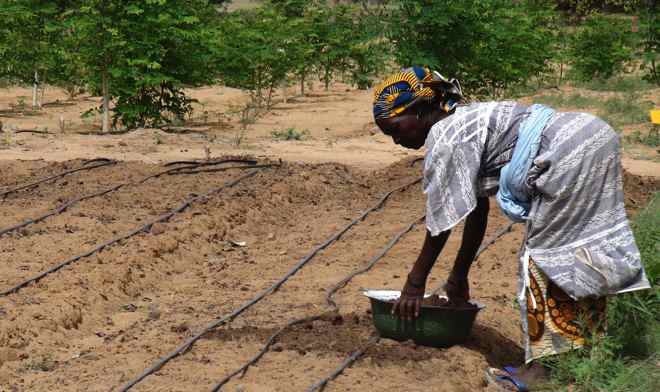Solutions for Sustainable Agriculture and Food Systems, the latest report from the Sustainable Development Solutions Network (SDSN) focuses on the role of sustainable agriculture in the future of development, identifying both challenges and available solutions for appropriate stakeholders. SDSN is a United Nations initiative working to innovate and promote solutions for sustainable development. The report was created to reflect the U.N. Post-2015 Development Agenda and its proposed Sustainable Development Goals (SDGs). According to the report prepared by the SDSN Thematic Group on Sustainable Agriculture and Food Systems, successful innovation and improvements in agriculture must “contribute more effectively to the reduction of poverty and malnutrition” and “become ecologically more sustainable.”
The report highlights six of the twelve possible SDGs with particular relevance to agricultural and food system development:
- Goal 1. End Extreme Poverty Including Hunger
- Goal 5: Achieve Health and Wellbeing At All Ages
- Goal 6: Improve Agriculture Systems and Raise Rural Prosperity
- Goal 8: Curb Human-Induced Climate Change and Ensure Sustainable Energy
- Goal 9: Secure Ecosystem Services and Biodiversity, and Ensure Good Management of Water and Other Natural Resources
- Goal 10: Transform Governance for Sustainable Development.
The report’s authors articulate key questions for the future of sustainable food systems and agricultural progress, including: issues of food waste reduction; profitability for farmers; agricultural extension; the role of biotechnology; the evolution of development in India, Africa and China; investment models; the roles of the private sector and foreign aid; and the incorporation of ecological principles into agricultural practices.
Answers to these tough questions and solutions for present-day challenges require new strategies, the report’s authors explain. “In the absence of change towards a new, shared global framework for sustainable development of agriculture and food systems, a Business-As-Usual (BAU) trajectory would have severe implications for food and nutritional security, economic and social development, public health as well as environmental sustainability.” The report describes challenges of hidden hunger, rural poverty, drudgery, urban and rural nutrition insecurity, soil depletion and drought. Spatial, cultural and gender inequalities in farming are also noted as areas for improvement.
Future sustainable agriculture and food system models described in the report will focus on efficiency and placed-based solutions, moving away from what the authors call “ideological battles” that “can lead to inconsistent and inefficient outcomes, particularly when local contexts are ignored in sweeping campaign rhetoric.”
“Context-specific strategies,” as the report explains, can mean near opposite solutions will work for different locals. In some places, positive development could mean small farmers will discontinue farming to take higher-paying jobs in other economic sectors. In other areas, the focus will be on improving the earnings and quality of life for female farmers who are often simultaneously expected to work in the fields and be responsible for a family’s domestic needs. No matter the place, the authors assert there must be a move toward agricultural models that pay attention to the target market. “Solutions need to be flexible in terms of offering a suite of technologies and support systems by different sectors in a complementary mode, with a particular emphasis on business-driven models.”
Suggested improvements also include increased data collection and availability across the agricultural sector. The report highlights a need for improved climate data as well as more open source information, referencing the G8 Open Data Charter, which moves toward a model of “open data by default.”
In closing, the report offers context-specific example solutions meant to spark conversation and strategy for solution development and information sharing going forward. As specific countries employ adaptations of these examples, SDSN intends to highlight those initiatives throughout implementation.















